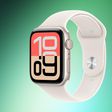Three out of four wearable devices worn by U.S. consumers are fitness bands, over half of which are made by Fitbit, according to new statistics released today.
According to Kantar Worldpanel ComTech’s wearable tech report 2016, more than one in ten consumers in the U.S. own a wearable device (12.2 percent of survey respondents), yet despite smartwatch vendors like Apple promoting advanced features over and above health and fitness capabilities, fitness bands are showing no signs of wavering popularity.

"For both smartwatch and fitness band buyers – brand, ease of use, and functionality are the top drivers of purchase, outweighing both design and cost," said Shannon Conway, wearable tech analyst for Kantar Worldpanel ComTech. "Fitbit established itself as an early market leader, capturing 61.7 percent of the U.S. installed base by communicating a clear and simple value proposition to consumers." By contrast, Apple accounts for only 6.8 percent of the total number of fitness bands and smartwatches owned in the US.
In the two months ending with March 2016, Fitbit claimed more than 50 percent of wearable purchases with the sales period only partially covering its newest releases, the Blaze and the Alta. Apple and Garmin trailed in second and third, respectively.
In the same period, Fitbit's Flex continued to be one of the top-selling models among fitness bands and smartwatches combined, behind the Fitbit Charge and Charge HR. Overall sales of wrist-worn wearables were driven largely by online purchases (63 percent) and particularly through Amazon.com, which has proven to be Fitbit's top retailer.
Meanwhile in Europe, wearables have not seen the same popularity as in the U.S., achieving only half the market penetration (6.6 percent), while Fitbit does not dominate the market the way it does on the other side of the Atlantic. "Of the combined fitness band and smartwatch base, Fitbit remains the most-owned brand at 18.5 percent, but Apple and Samsung follow closely with 14 percent and 11.6 percent, respectively," said market analyst Lauren Guenveur. Europe's big four markets include Great Britain, Germany, France, and Italy.
Earlier this week, Fitbit CEO James Park explained in an interview how he decided to re-engineer Fitbit products to support Bluetooth following the introduction of the iPhone 4s (the first iPhone to support Bluetooth 4.0), which made the the Fitbit One and the Fitbit Zip highly successful as a result. Since then, Fitbit has made an effort to stray away from Apple's approach to product design, focusing on simple devices to make wearables more approachable while avoiding "feature overload".
Fitbit sold 21.4 million devices in 2015, earning $1.86 billion in revenue. While Apple doesn't break out sales of the Apple Watch, IDC and Strategy Analytics estimates put sales at approximately 11.4 million.
The full Kantar Worldpanel ComTech Quarterly Wearables Report can be viewed here.
























Top Rated Comments
3 things the Apple Watch isn't.
It might have a good enough battery for a "smart watch" but when compared to dedicated fitness devices which are also platform agnostic it doesn't hold up at all. And when compared to something like a Fenix 3 the Apple Watch is absolutely pitiful in every regard from a sports and fitness perspective.
So better in every way? No, not even close to an accurate statement.
The Apple watch doesn't compete with fitness bands.
My Fitbit lasts all week and track calories. Apple watch doesn't which is why it's not doing as well as it could.
Apple watch 1 - battery doesn't last a day
Apple watch 2 - new feature, battery lasts 1 day!
Apple Watch 3 - battery lasts 2 days. It's 50% better!
Apple Watch 4 - etc..
Meanwhile, i'm sure all other fitness trackers will last a month on a single charge, track calories, barcode scan and do all other sorts of body tracking.